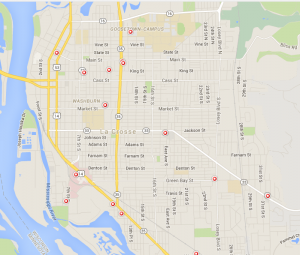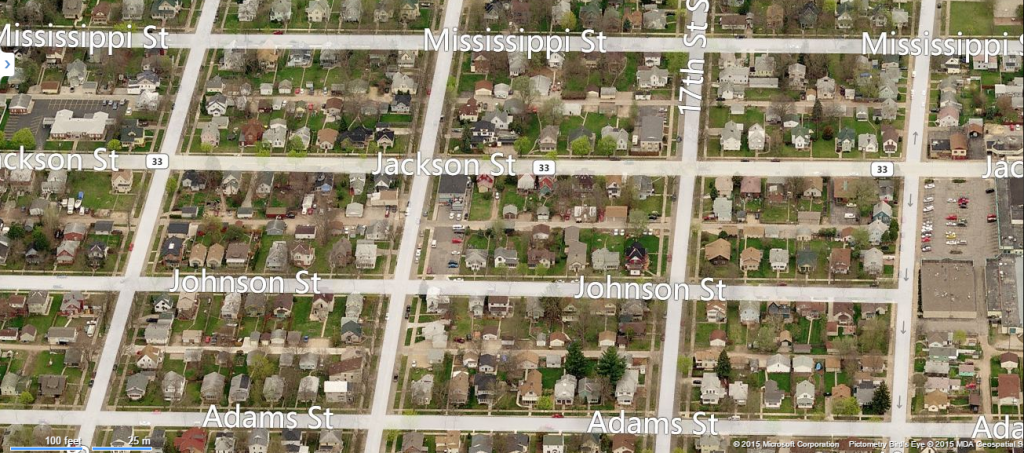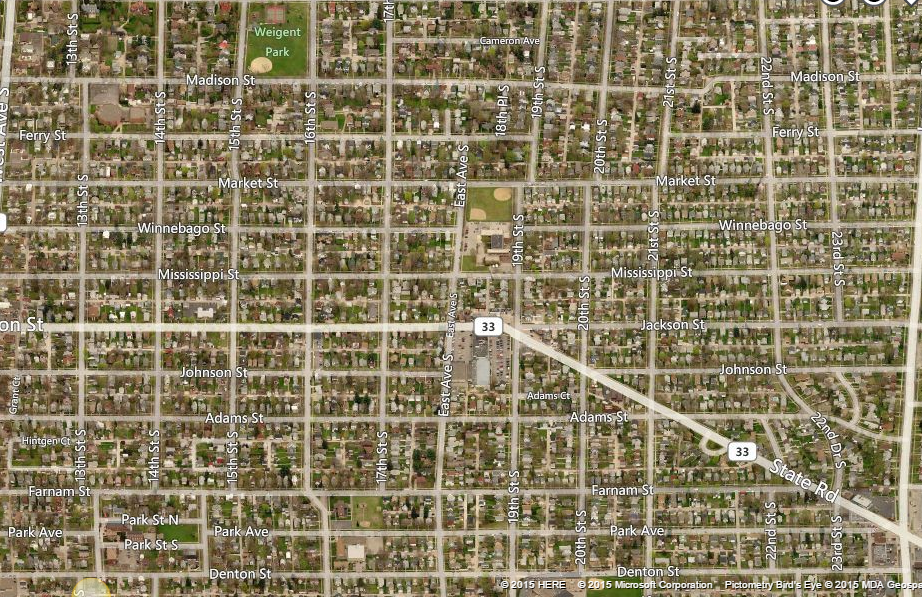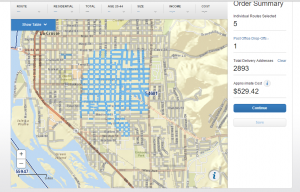Put me up against the best local SEO/PPC/FB/YT/Mobile/Whatever marketing guy or gal in the world, with almost ANY specific dollar amount, and I am 1000% certain that I could deliver more business to any brick & mortar client than they could for the money.
I don’t care if it’s $50 or $50,000, I’d smack any local marketer who stepped to me with their fancy-pants techno wizardry that hardly ever works and becomes outdated within six months.
I seriously wish there was a contest or gameshow for that.
Now I’m not saying digital marketing is bad, I do have a love (and a use) for it, but it’s a tough thing to sell, it’s unpredictable, changes all the time, is expensive, and can’t bring results in a snap. So I only really use it in certain situations. What I’m more focused on is how to make a lot happen with very little.
I’ve spent years now, every day, figuring out how to take small amounts of a local business owners money and return large amounts of value in return, all while making it consistently easier to sell and fulfill.
Getting real, actual customers for my clients is a routine accomplishment, not some freak occurence.
I can’t always wave my magic wand and see people flying in my clients doors or ringing their phones off the hook (and often that’s not even the goal) but if I want to do that, it’s not very difficult.
And you can do it too.
First, Enter Reality
One of the key understanding’s is to STOP thinking about local marketing from a digital perspective. Local clients exist in a real environment with real-world conditions. You’re not marketing some online store.
Here’s a groundbreaking discovery: If your client is a ‘local’ business, the majority of their customers are coming from a close distance. They aren’t driving for hours to go to the dentist, eat, buy clothes, go bowling, buy pool supplies, pick out carpet or , get pizza, get their nails done, or buy a new couch and sofa.
Your clients existing customers as well as all potential ones are simply a bunch of sitting ducks just waiting to be plucked out of the general radius around where the business is located.
Brightlocal published a helpful study on how far people say they’re willing to drive to various local businesses and found that it typically ranges from 12 minutes to 23 minutes. Gym’s, hairdressers, and bars are what people don’t seem to want to drive very far to, and doctors are at the furthest. Restaurants, shops, mechanics, and accountants are all squished in between.
Now I’m not stupid, I understand distance varies based on the area, because a ten minute distance in Boston is much different than ten minutes driving distance in Ossipee, VT; but fact is, people tend to patronize businesses that are nearby.
Why is this important?
Because Most Local
Marketers Are Blind To It
Most new-school marketers today don’t think about real world conditions. They think about marketing solely from a digital perspective.
Their entire marketing world seems to exist within a lighted screen displaying nothing but keywords, search rankings, social engagement, wordpress plugins and ever-changing data figures complex enough to make your head burst.
And that’s exactly what happens when you try to communicate these things with a typical business owner. If you could plug a cord into their brain and read it on your computer you’d see them saying “Ok this guy wants me to spend $1000 with him to do a bunch of stuff on the computer that I can’t even see nor understand?”
I’m not knocking the incredible amount of data available today at our fingertips; it’s all extremely useful and powerful, but it’s incredibly limiting as well.
This is why the same client who tells you they don’t want to spend $1,500 with you on SEO has no problem paying $5,000/month on a billboard. It’s tangible, simple to understand, impressive, and reaches people where they want people to see.
Here’s How To See Things Differentely
Say you’re a marketer in La Crosse, Wisconsin (population 53,000) and your client is a dentist who wants new patients. There’s a lot you can do using the digital landscape, such as optimizing their website, building their reputation, ranking videos, building a social presence, SEO, or even PPC. But they all take lots of time, lots of money, and are hard to sell when you haven’t shown any kind of results yet.
And to boot (which scares the bejeezus out of me personally): Google, FB, and Youtube can change everything at a moments notice … Usually right after you finally figure out something that’s working.

image courtesy of Google Maps
Instead of looking up keyword data all day and night on your computer, you could simply look at google maps and see what the heck the area your client is in looks like.
Searching Google for “dentists in la crosse wi” you can see there’s quite a few.
Notice they’re not clustered together; they’re spread out. Why?
Because people don’t want to travel very far.
This is why some brick & mortar businesses can survive just by location alone. If there’s traffic (the real kind, not the digital kind), then people are usually going to visit them.
This is why a lot of businesses still manage to survive even though they don’t do any advertising, and also why a lot of really crappy businesses stay in business!
Visibility and the fact that people don’t want to travel far is a great marketing formula in itself.
I know this will confuse many marketers who are used to thinking that the only way to market a business is through search rankings and mobile optimization, but again we’re talking local businesses and not amazon.com.
It doesn’t help that SEO gurus are typically NOT marketing local businesses when they share their advice; they’re marketing online businesses that target people from all over the nation (or world) and only exist on a digital highway and not a physical one.
Let’s get back to the real world and narrow down the neighborhoods in La Crosse.
By looking at the actual location of these businesses, you can see where customers are coming from, rather than trying to look at a bunch of funky data and trends.

Here you can see an area I’ve zoomed into, which clearly shows the dental practices and how they’re typically evenly spaced out specifically … in order to be conveniently located for people within a certain part of town.
Notice there’s also often two next to each other, which is typical because you can generally have one or two direct competitors without suffering. People like choices and will often try another one out due to the ‘grass is always greener on the other side’ mentality most of us have.
Here’s How to Quickly Analyze
and Find Where New Customers Are
With your marketing brain, start thinking of where all potential customers are going to be coming from. Just use common sense. I usually start by drawing a circular radius around where my client is and also a circle around where the competitors are (not the direct competitors but the ones that are spaced out that serve a different area.
Then I look at areas that are outside the circle and try to visualize where those people would be going to the closest business. See this quick image I made in photoshop (you could always use word or any even ms paint to draw transparent shapes as well):

blue is where our client is probably grabbing customers from
Here’s a tip: in many areas, a main highway or road will often be a boundary that people don’t often cross to visit a business, unless it’s directly adjacent.
This often just comes down to local knowledge of your area but is important to keep in mind. In many cities and even villages, people will view neighboring areas almost like an entirely different world that they might rarely venture into.
Another good tip is to make these simple maps and present them to your clients, as it’s much more impressive and easy-to-understand than sending them pdf’s of strange data and statistics that just confuses them.
Now What?
Armed with some simple research from our helpful google maps, you can find not only identify where customers are coming from but where new customers are located.
Why try to find the random, odd person that drives all the way across town to visit your client when all the sitting ducks are right in their backyard?
Zooming in further, you can see what the neighborhood right to the west of the client looks like, with about 100 homes:

About 100 homes
Keep in mind 100 homes means about 200 people, all of which would likely visit a dentist at some point.
Every business is different and you’ll need to think about who’s likely to visit that particular business and how often but it still comes down to the fact you’re usually picking out people within a tightly defined area.
Reach the Right People With the Right Message.
Marketing is not rocket science, especially at the local level. It’s just a simple matter of reaching the right people with the right message, using the right media (thanks Dan Kennedy).
Right inside those borders are people who will use your clients services for one reason or another. There’s people right now that aren’t happy with the competitor, people who suddenly need the service, want the product, or might think it’s worth visiting if there’s an incentive.
They’re Not All Searching Google
Believe it or not, there’s lots of people who aren’t searching the internet for what your client offers, yet will visit if given a good offer. For example, you won’t find a single search on my computer for “pizza” but if I got a coupon for buy 1 get 1 pizza from some local place you better believe I’ll use it.
Hell I need a new mattress, and I’ll probably spend $2500+ on it but I’m not searching online anywhere yet for one. If a hell of a deal on a mattress happened to come across my eyes I might just buy one, even though I’m not actively searching yet for one.
This is where so many local marketers who’ve only started their career in the past ten years have got it so wrong. Prospects don’t exist solely as keyword data and youtube viewers.
Prospects are real people living in real homes, and things like visibility, location, physical traffic, and even parking convenience are major components that seem to be totally ignored by digital marketers. These things won’t change.
By focusing on the neighborhoods around your clients business, you can start using media like postcards to reach them instead of trying to get on their digital devices.
The post office’s EDDM program lets you send huge postcards to whole neighborhoods for less than 20 cents each in postage.
Considering it would cost 98 cents (two stamps) to send an oversized postcard normally, this is one hell of a program you shouldn’t be ignoring. That means you could send a giant glossy color postcard into the hands of every single one of those 100 residences for less than $20 in postage!

Roughly 1000 homes in their local market.
Here I’ve expanded the map to show the entire area where every current and potential customer is living, including the neighborhoods served by their nearby competitors.
Rather than spending fortunes on trying to reach these people via billboards, SEO, facebook, tv, radio, and any other media you can think of, why not simply send postcards out and be assured everyone sees it?
Hopping onto the EDDM site and clicking the relevant neighborhoods, it shows about 3000 residences here, meaning about 6600 people (considering 2.2 people on average live in a home).
If you can manage to peel your jaw off the floor, you’ll see that every single one of those residences can be reached for only $530 in postage. Not tens of thousands in massive branding and SEO or PPC efforts.

So What Does This Mean For You as a Marketer?
It means you’ll now be able to visually see where these sitting ducks are and target them instantly for cheap, meaning you’ll have plenty of room to mark it up as you please.
And it makes total sense to business owners, as they understand location based marketing much better than digital nerdspeak; so it won’t blow a fuse in their brain.
Best of all, you can collect payment and not have to worry about fulfilling technical projects afterwards. You simply print & mail, then do it again and again.
This is a key component of why I’d gladly take nearly any local client, any location, with virtually any budget, and smack the hell out of any digital marketer when it comes to getting results for the money. Digital marketing to me, is what comes AFTER you’ve used postcards to do the initial dirty work.
If you’d like to learn more about how to use postcard marketing in ways you’ve never imagined, check out the tutorials, guides, and community in the member area.